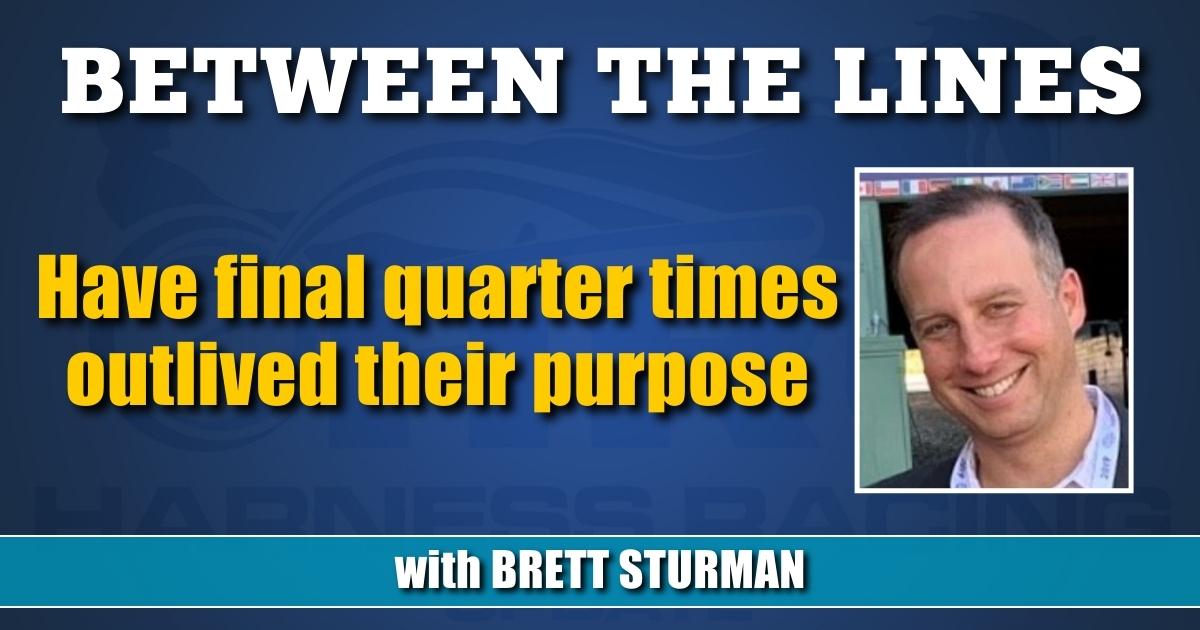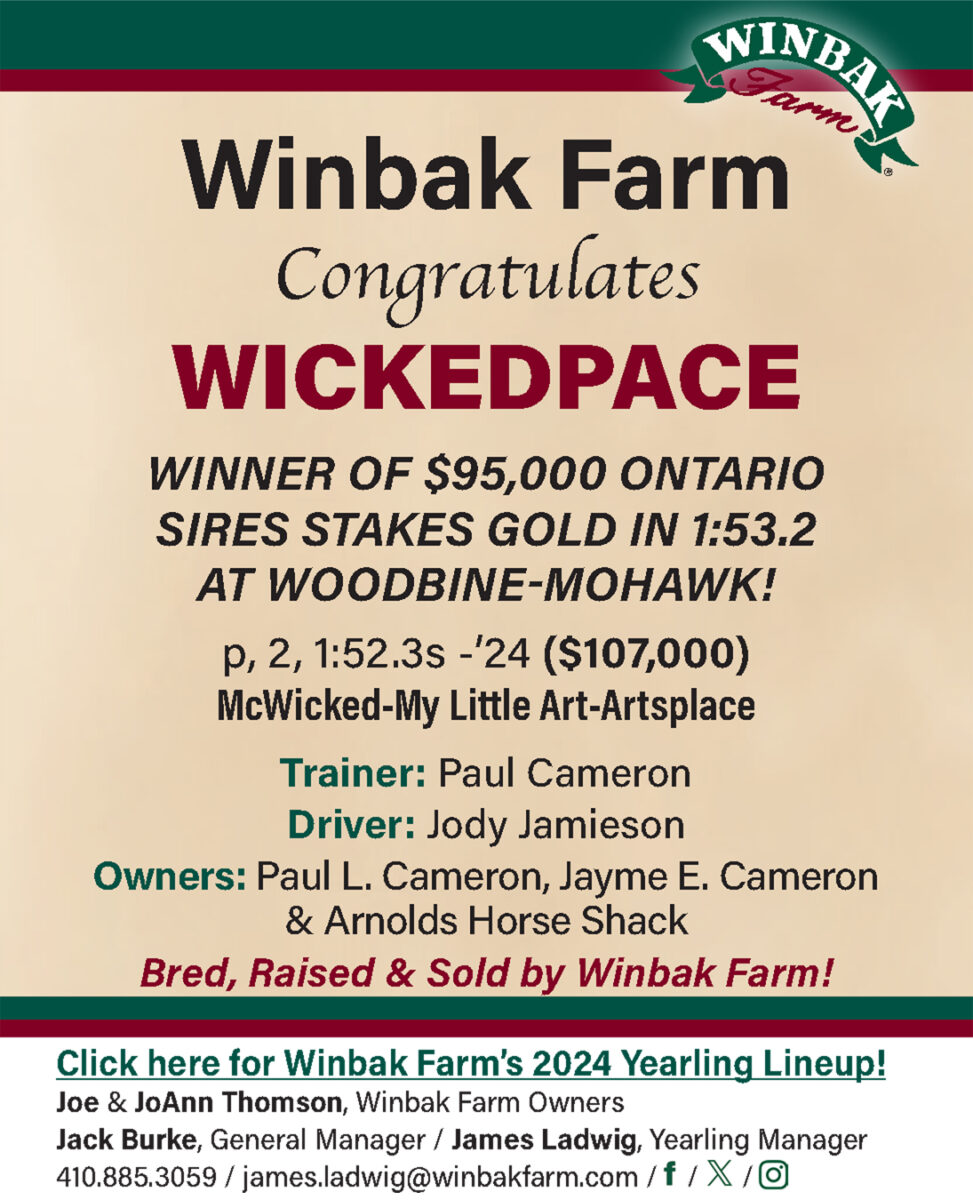

Have final quarter times outlived their purpose
by Brett Sturman
For some, a standard element in handicapping is assessing a horse’s individual final quarter time. It’s considered an important enough factor that it’s part of the past performance lines in every racing program.
It wasn’t always that way, however. Looking back through programs from the 1960s and 1970s shows no reference to a last quarter time, and even well into the 1980s the last quarter time was only recorded in the program based on which tracks were including that information. Today, that final quarter metric may have outlived its usefulness.
Many years prior it may have meant something for a horse to post an exceptionally fast final last quarter or a last quarter by a horse that was superior to any other horses in a race may have indicated a superior animal. Today, that’s no longer the case, as almost all horses under the right circumstances can finish their miles equally fast.
In a column written here four years ago, the late, great Dave Brower and I discussed the increasingly faster and more commonplace final quarters at The Meadowlands. That was on the heels of a weekend of racing where horses closing in :25 and change was normal, with one horse closing in :24.3. But the same can be seen across other tracks.
A perfect example to illustrate came from a race at Woodbine Mohawk Park earlier this week. The first race on Tuesday night (June 20) was a maiden race for newly-minted 2-year-old pacing fillies. In a field of seven nice enough but not anything out of the ordinarily looking fillies, here were the final quarters of each horse in the race that finished. From the top down, :25.3, :26.1, :26.2, :25.3, :26.4, and :27. The point being, if brand new fillies are pacing :25 final quarters in June (in one case still only good enough to be fourth by six lengths), is it impressive or does it even matter when aged free for all horses are pacing the same?
Obviously, the final quarter times are nothing more than a reflection of the time of the first three-quarters of the mile up to that point. In the case of the Mohawk race, the 3/4 time of the race was 1:28:1, consistent for that type of race. But when the final time of 1:54.1 was posted, track announcer Middleton said “that’s… not right.” At the time, I thought to myself that as far-fetched as it seemed, maybe it actually was right. And since that remains the final race time and final last quarters in the race charts as they’re currently shown on Standardbred Canada, I assume those are the correct times.
The next race that night was another 2-year-old race, this one for trotters that were all making their first lifetime start. Two horses in that race trotted their final quarter in :27 and a couple others in :27 and change. The race after that one was essentially a maiden race for 3-year-olds and every horse that raced came home in :26.1 or :26.2. You get the point. From a handicapping standpoint, the final quarters aren’t providing much information other than the early pace in the race was slow.
Somewhat more useful, the past performance lines in DRF Harness show not only each horse’s final quarter time, but includes the individual clocking for all fractional splits. At least from that view there is a reference point. You can see the final quarter in the context of the other quarter times. In that sense, one could make the argument that no single quarter by itself is more important than another, so the question then becomes why highlight only the final quarter in all other standard program forms.
When Voukefalas qualified back this year for the first time in April, he made headlines with a :24.4 final quarter in that race. His individual 3/4 time in that race was around 1:27.4. So, while the last quarter may seem impressive on the surface, it’s not unreasonable to expect a similar outcome from any other horse of that caliber. Which digressing for a moment, got me thinking. Theoretically, what’s the fastest quarter mile time that a standardbred is capable of? If there was a quarter mile sprint for the fun of it on a straightaway at The Meadowlands or Woodbine Mohawk Park, could a top horse go sub-:24?
Back to the subject at hand, I used to think that maybe the final quarter times had more meaning in the lower-level non-winners of one or non-winners of two race conditions. There, some younger horses are simply faster than others, as opposed to the higher levels where in many cases horses may all be interchangeable in the fractional and final times that they can produce. But using those 2-year-old Mohawk races as examples, even that may not be the case as those final last quarters may turn out to be wildly misleading.
Perhaps it was said best by Brower from the column referenced above. For him, it was far more important what he saw with his own eyes than the reported times. No matter how the final quarter times are used in handicapping a race, if at all, it’ll never be a substitute for what can be gained by what in a race physically catches the eye.















